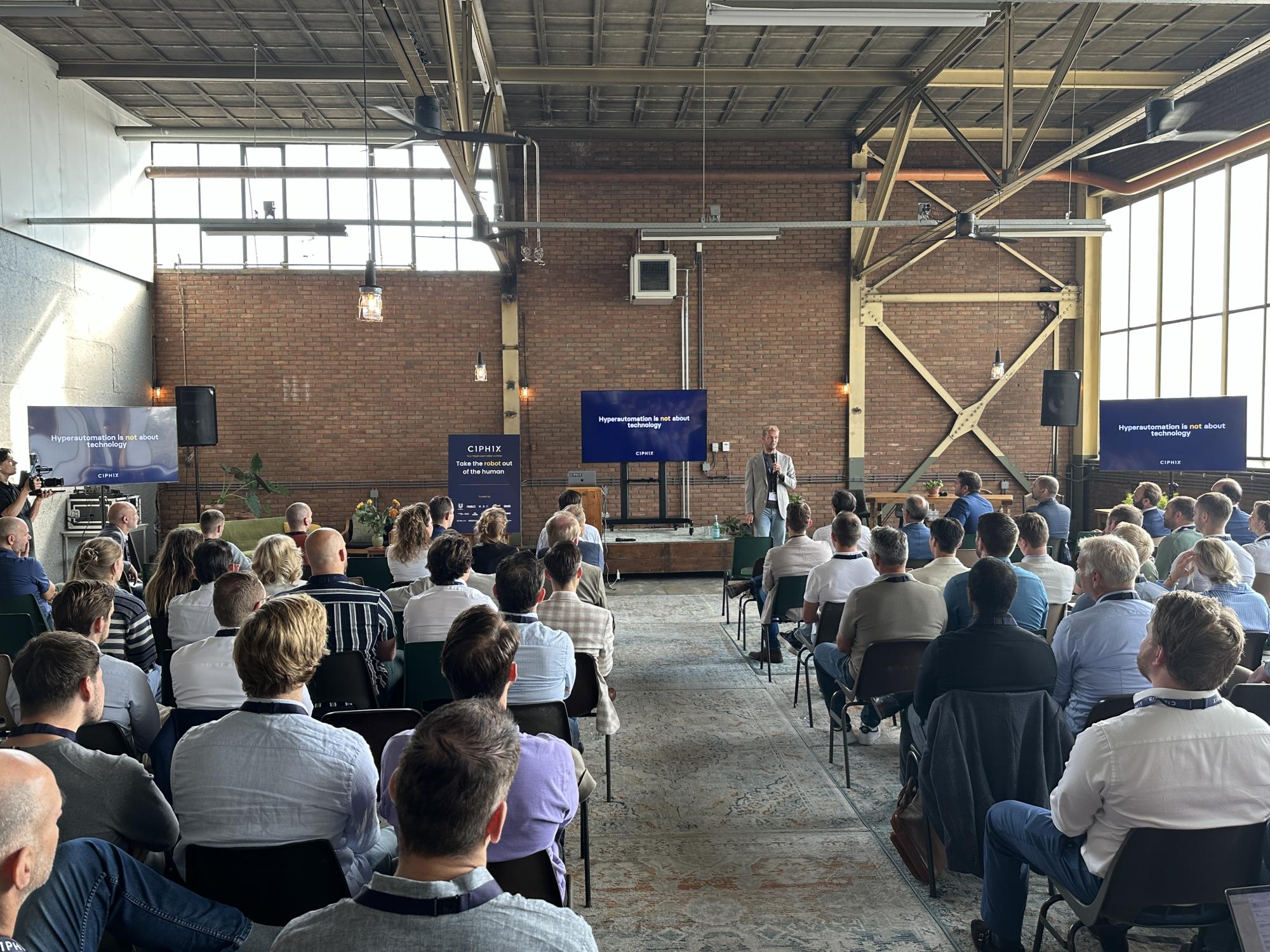Hyperautomation is all about maximizing business value with technology
25 September 2024 • News

Hyperautomation: It’s Not Just About Technology
Many companies still think that hyperautomation is simply about using technology. This is a misconception, because hyperautomation should be about maximising business value through the use of technology. This was one of the key takeaways from the hyperautomation event that Ciphix recently hosted. We’re excited to share with you the most important insights from the event.
Transition to Business-Driven Hyperautomation
CSO Marijn van der Poel highlighted the importance of automation driven by the needs of the business, rather than by technology itself, in his keynote address. Van der Poel stated:
“Hyperautomation is not about embracing the latest technology; it’s about addressing fundamental business challenges. Think of increasing labour shortages, the inability to meet customer demands, or rising pressures within the organisation to reduce costs. When the hyperautomation solution aligns with the needs of the business, organisations experience greater adoption, smoother transitions, and far better long-term results.”
However, there are significant barriers to successful hyperautomation projects. For example, organisations that see hyperautomation as merely an IT initiative, or those lacking alignment with their strategic goals, can struggle. Van der Poel added:
“In many organisations, management doesn’t understand what hyperautomation can deliver. That’s why it’s crucial to have inspiring business cases from IT to demonstrate its value to management.”
Capture and Demonstrate the Value of Hyperautomation
Another important insight is the need for organisations to explicitly capture and demonstrate the value of hyperautomation. CFOs and other members of the management team are primarily focused on financial outcomes. If hyperautomation does not immediately improve profitability, its value can be questioned.
To ensure its value is recognised, it must be captured and demonstrated from the outset. Clear definitions of success should be established at the beginning of each project. Whether the goal is to outperform competitors, improve internal processes, or create new revenue streams, it must be clearly defined. This can be achieved by asking business-driven questions, setting a concrete budget, and ensuring strong executive buy-in.
Too often, hyperautomation projects are seen as an “IT party” without involving management in setting KPIs. Successful value capture requires close collaboration between IT and the boardroom.
IT’s Role in Fostering Creativity and Innovation
Although hyperautomation must be business-driven, IT still plays a vital role. IT departments are no longer just technical support staff; they can now be key drivers of innovation and creativity within organisations. For example, IT teams can lead the way by creating business cases that showcase how hyperautomation can address specific business challenges, encouraging the business to think creatively about automating their workflows.
Low-Code Platforms Accelerate Hyperautomation
Low-code platforms are one of six technologies used by Ciphix to drive hyperautomation. During the event, Menno Odijk, Field CTO of Mendix, led an insightful breakout session on how low-code platforms accelerate hyperautomation projects. With Mendix, companies can develop applications up to ten times faster, using 70% fewer resources. This makes low-code a perfect solution for the growing demand for software, which often exceeds the budget and resources of IT departments.
A prime example of the added value of low-code came from Stephen Gallagher, Football Data Scientist at Raiola. By using Mendix low-code, Raiola was able to merge data from different sources into one centralised database, which was then enhanced with AI features to make predictions. This allowed Raiola to be proactive, rather than reactive. Stephen Gallagher explained:
“It used to take hours to generate a report on players, for example, detailing their performance in a game. Now, we can present a report immediately. Our contract management and player scouting processes are also much more efficient now.”
Start with Low-Hanging Fruit
The panel discussion provided several key insights into how organisations can improve their hyperautomation initiatives. The first step is to start with “low-hanging fruit,” enabling organisations to quickly see value and secure continued support from management. Tools like UiPath, in particular, offer great opportunities for this. Celonis also emphasised that automation efforts should align with the business strategy by starting with a strategic value story. The panel also stressed the importance of collaboration between business and IT, as good collaboration helps prevent hyperautomation projects from getting stuck in silos and ensures they are both strategically and technologically aligned.
In Conclusion
In short, hyperautomation is not just about technology; it’s about realising maximum business value with the help of technology. Companies must adopt a business-driven approach that puts the organisation’s needs at the centre. Collaboration between IT and the business is essential to overcome obstacles and ensure better adoption of hyperautomation projects. Low-code platforms can accelerate projects, but success depends on aligning them properly with business priorities.
Related
We will help you further!
Replace outdated systems, digitize complex business processes and accelerate innovation.



